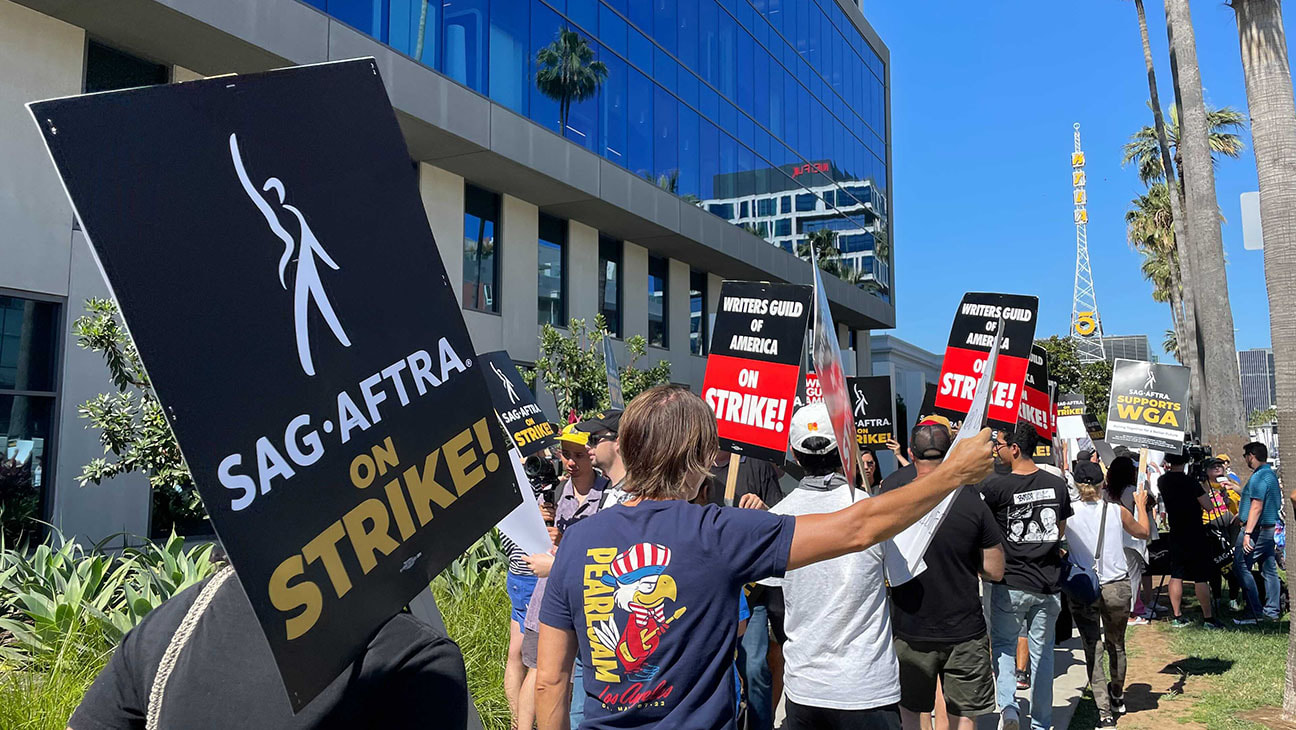|
Cred. TIFFANY TAYLOR The Hollywood Reporter
Understanding the SAG-AFTRA strike and its impact on UK performers in the UK If you're an actor or performer in the entertainment industry, you may have heard about the SAG-AFTRA industrial action. We’ll break down what the strike means, how it affects performers, and what actions you can take. What is the SAG-AFTRA industrial action? It's a work stoppage initiated by the Screen Actors Guild-American Federation of Television and Radio Artists (SAG-AFTRA). This action comes as a result of ongoing contract negotiations with the Association of Motion Pictures and Television Producers (AMPTP) which represent corporations that create streaming/film content. That includes companies like Netflix, Amazon and traditional studios. Why is the strike happening? SAG-AFTRA is negotiating with AMPTP about fair wages, improved working conditions, protection of performers' likenesses (including the fight against a requirement for performers' consent for the creation and use of digital replicas, or for digital alterations of a performance), and better residual payments for performers in film, television, and digital media. You can read more about the strike on SAG-AFTRA’s website. https://www.sagaftrastrike.org/ How does the strike affect UK performers? You may have noticed the lack of projects and opportunities due to the affects of both the actor and writer strikes. If you’re a performer who has Equity membership but you’re not a member of SAG-AFTRA, the advice is to continue to work when you can. If you're involved in co-productions or working with SAG-AFTRA members, the strike can potentially disrupt or delay productions. It's important to stay informed and be prepared for any changes that may arise. Should I/can I participate in the strike? If you’re an Equity member, their UK lawyers have advised that whilst the strike is lawful in the US, it’s not legal in the UK. Therefore any performer joining a strike or who refuses to cross a picket line in the UK will have no protection against being dismissed or sued by the producer or engager for breach of contracts. How long will the SAG-AFTRA industrial action last? Unfortunately, the duration remains uncertain, as it depends on the progress made in ongoing negotiations. It could be resolved relatively quickly or extend over a longer period. We’ll keep this page updated as we find out more. During this period of industrial action, it's crucial to stay informed, support your fellow performers, and seek guidance when needed. Acting is comprised of physical, vocal, mental, and emotional work that requires preparation for you to do the best performance possible. Your body and mind need to be warmed up for you to deliver your best work to the camera. Why are warmups important for actors? A good warmup will help you relax, get rid of any anxieties, and make you feel looser in preparation for the physical demands of a performance. Warmups are an essential part of any pre-performance routine. 7 Physical Warmups Warmup routines don’t need to take up lots of time, and they can be done both alone and in a group. 1. Work your neck: Roll your neck around forwards, side to side, then backwards. Roll it around in one direction, then the other. 2. Shoulders: Shrug your shoulders up, down, then roll them forwards and backwards. 3. Circle your arms: Swing your arms in a circle in one direction, then the other, then in opposite directions. 4. Stretch your ribs: Raise your arms above your head, then lean to one side, feel the tension release on your ribcage. Hold this position for a moment, then return to the upright position and repeat on the other side. 5. Breathwork: Stand completely straight, as if a string is pulling at the very top of your head. Now breathe in deeply and slowly through your nose, then exhale slowly through your mouth. Repeat this process a few times to slow your heart rate down and relax. 6. Folds: Bend forward at the waist, dropping your head with your arms reaching downwards. Hold this position for 10 seconds. Then come all the way back up into a slight backward bend, holding for another 10 seconds. Repeat this process a few times until you feel your posture has improved, and you feel a little more relaxed. 7. Shake everything out: Start out by shaking your hands, then bring the shake up into your arms, then into your entire body. This should release any lingering tension you might have. 3 Facial Warmups Your facial expressions are key to a good performance, especially when filming a close-up shot. Warming up and relaxing your facial muscles will allow your face to be more expressive. 1. Massage your face: You should begin your facial warmups by massaging your face in slow, circular motions to loosen the muscles around your mouth, eyes, and forehead. 2. Use the “lion/mouse” technique: Yes, it sounds strange, but trust the process. Stand in front of a mirror and stretch all your facial muscles. Start by opening your mouth wide, like a lion roaring. Then scrunch your face into a meek, small expression – like a mouse. Switch back and forth between these two positions a few times. 3. Stretch your tongue: Stick your tongue out, then pull it down as far as you can, the up, now move it side to side. This will help you move your mouth with more fluidity and to enunciate and articulate your words. 6 Vocal Warmups
We have to make sure that you're not slipping up on your lines. Clear diction is imperative for an actor. 1. The “Hum”: Exhale slowly, humming until you have let all of your breath out. Repeat this exercise around five times. 2. The “Ha”: Stand up straight and place your hand on your belly. Breathe in while pushing your stomach outward, this lets you breathe from your diaphragm. Breathe out slowly whilst saying “ha ha ha”. Push your stomach in with every syllable. Repeat this process a few times. 3. Lip trills and flutters: To do these, you should roll your tongue on the roof of your mouth to make a “trr” or “rr” sound. 4. Descending nasal consonants: Say the word “onion”, but stretch the “ny” sound and make your voice lower every time you do so. 5. Tongue twisters: Memorise a few tongue twisters, such as the classic “red lorry yellow lorry” or a personal favourite “unique New York” and repeat them to loosen up your mouth. 6. Yawn and sigh: Open your mouth as if to yawn and let yourself sigh loudly from the top of your vocal register down to its lowest note. |
AuthorCastings, Industry News, Job Opportunities, Careers Advise and much more. Archives
February 2024
Categories
All
|
Contact Us |




 RSS Feed
RSS Feed
